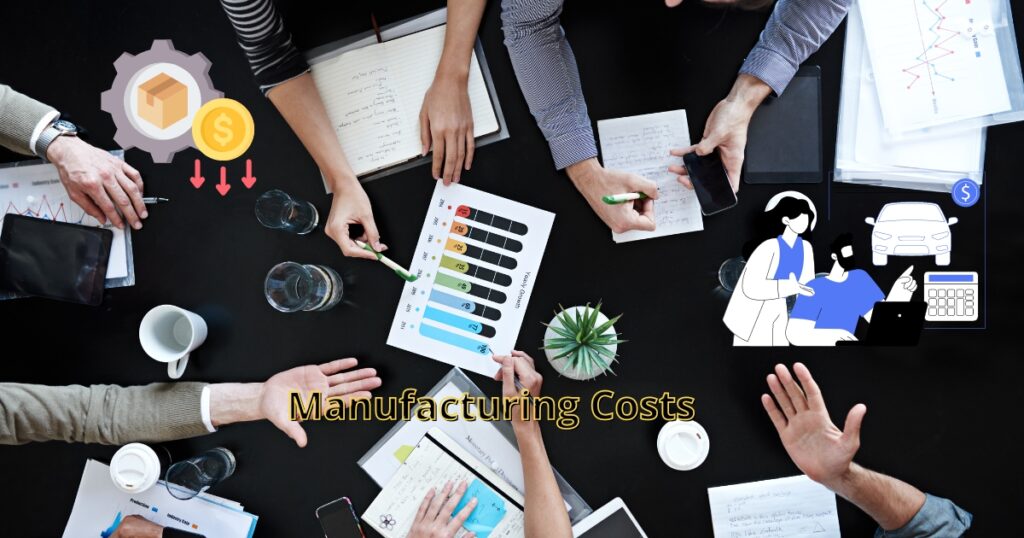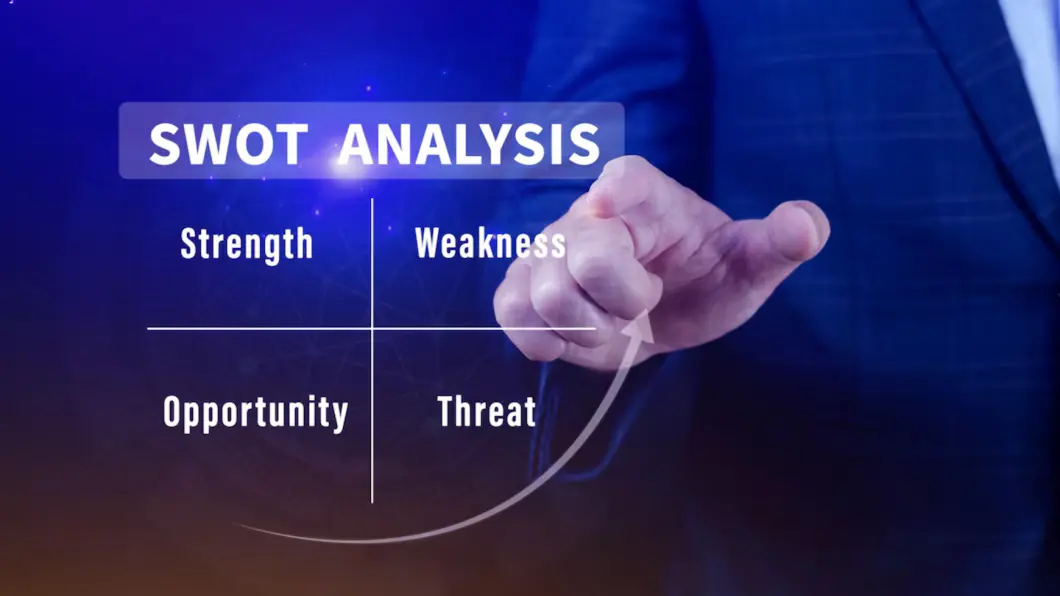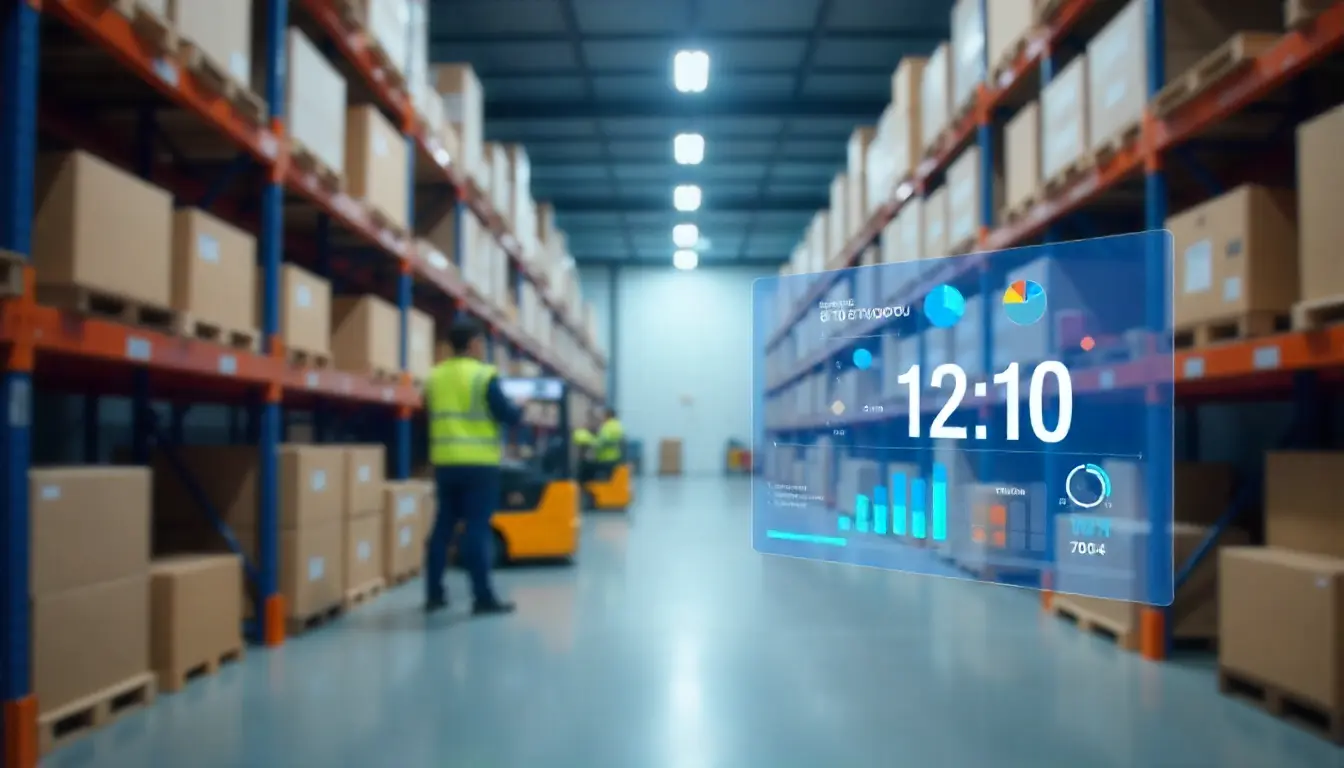What is Manufacturing Costs?
Manufacturing Cost is an all-comprehensive term that includes direct, indirect, and overhead costs incurred throughout the manufacturing of goods and services such as materials, utilities, labor, land acquisition, factory rent, inventory storage, electricity, and insurance, among others. Also Manufacturing costs include: Direct and Indirect Costs.
- Manufacturing costs are also called as Product costs are a list of expenses associated with the production of a product, including direct material, direct labor and manufacturing overhead.
- Direct material costs include everything consumed for completing production, like raw materials, components, subassemblies, and packing material. Direct labor costs consist of daily wages, salaries of production employees and other benefits like medical insurance.
- Manufacturing overhead, on the other hand, comprises indirect costs to support production activities. Such costs include the cost of lubricants, polishing and grinding material, electricity, machinery maintenance and depreciation, property tax, etc.
What is Difference Between Direct & Indirect Cost in Manufacturing Costs?
When you know the difference between direct and indirect costs, you can easily separate such costs and optimize them to ensure effective ultilization of resources.
- Direct Costs : In manufacturing, direct costs primarily include direct material and direct labor costs. While direct materials covers raw materials, components and subassemblies, direct labor mainly consists of production and assembly labor wages. Essentially, all direct costs are directly incurred on the shop floor in the making of the product.
- Indirect Costs: Under indirect costs, we do not include raw material and direct labor expenses. Instead, we include costs that indirectly support production activities. For example, salaries of staff not directly involved in production (production supervisors, maintenance personnel, and quality control manager), expenses incurred to repair equipment and machinery, machinery depreciation, utility bills, rents and so on.
Steps to Calculate Total Manufacturing Cost (TMC)
Now that we’ve discussed what is manufacturing cost and difference between Direct and Indirect Costs, let us explore simple steps for calculating total manufacturing cost.
Formula for Calculating Total Manufacturing Cost:
-
Manufacturing Cost formula = Raw Materials + Labour Costs + Allocated Manufacturing Overheads
- Determine Raw Materials Cost: The need for raw materials keeps changing depending on the availability & market cost of the raw materials, and new trends in the market. The Raw Materials Cost includes the sum of all raw materials procured throughout different stages of the manufacturing process, excluding closing stock of raw materials at the end of the year.
- Compute Labour Costs: In this step, the labor costs are calculated such as maintenance for employees, sanitation laborers, bookkeepers involved in the production process, factory managers, production line employees, and material handlers. Employee wages and salaries also come under these labor costs. The labor costs have to be calculated for the specific production period.
- Identify Manufacturing Overhead Costs: In this step, calculate the manufacturing overhead costs of a specific production period. Manufacturing overhead costs include electricity charges, depreciating equipment used for production, property taxes, insurance for equipment and facility, etc.
- Calculate Total Manufacturing Cost: For calculating manufacturing costs, the above steps are added. General and administrative costs are excluded from the Total Manufacturing Cost (TMC). Office rent, administrative wages, office equipment, and executive salaries are included in the general and administrative costs.
- Measure Cost Per Item: All the above four steps are essential for calculating total mfg cost. However, this is an optional step that helps businesses identify the price paid for each manufacturing function. By determining the cost of each item, the company can find ways to reduce mfg cost. By dividing the Total Manufacturing Cost (TMC) by the total number of products the company produced in a specific period, the cost per item can be calculated.
What are the Examples of Manufacturing Costs?
The examples of manufacturing costs can be classified into three categories namely Direct Manufacturing Costs, Indirect Manufacturing Costs, and Overhead Manufacturing Costs.
I. Direct Costs
Here are the examples of Manufacturing cost that are considered direct expenditures:
- Materials Costs: Direct materials are all the raw materials used to create a finished product. Direct material costs are the parts and materials used to make the finished product. Indirect material costs are more constant, these are the items used to support the manufacturing. For example, containers or pallets are used to store raw materials.
- Direct Labour Costs: The Direct Labour Costs include the sum of the wages paid to all laborers, in addition to any employment benefits and taxes paid to them. All the labor costs associated with the production unit come under direct labor. Thus, the employees involved in refining, assembly, and manufacturing of the goods belong to direct labor.
- Energy Costs: Manufacturing businesses incur significant energy costs due to various operations such as heating, cooling, and powering up heavy machinery & generators. As global energy prices fluctuate, it affects the manufacturer’s profit margin.
- Freight Costs: Other examples of manufacturing costs include freight costs. Businesses may incur significant costs while transporting goods from one location to another. Moreover, they may also incur material handling and storage charges. They may also have to pay taxes to state governments or local municipal bodies.
II. Indirect Costs
Here are the examples of manufacturing costs that are considered indirect expenditures:
- Utility Bills: Much like households, manufacturing businesses also have to pay regular utility bills to third-party businesses. These bills include electricity, water, natural gas, and waste disposal, among others. If a business fails to protect its utility bills on time, it risks disrupting the manufacturing process.
- Machine Repairs: Machine repair and maintenance is a crucial activity. With time, machines may become inefficient and deteriorate. Besides degrading the worker’s productivity, such machines also risk becoming a safety hazard. Manufacturers incur a significant cost in repairing machines that are inefficient machines and risk fire, threat to life, injury, or compliance penalties.
- Non-manufacturing Staff Salaries: Manufacturing firms have to pay salaries to employees engaged in non-manufacturing activities such as accounts and administration, human resource department, marketing & sales, IT engineers, and lawyers, among others. Since these employees are not directly engaged in the production activity, their expenditures are considered indirect costs.
- Quality Inspection Costs: Quality inspection costs are one of the other key examples of manufacturing costs. Manufacturers have to implement quality control mechanisms at every step to comply with modern industry standards and increased customer expectations.
III. Overhead Manufacturing Costs
Here are the examples of manufacturing costs that are considered overhead expenditures:
- Depreciation of Factory Machinery: Over time, the value of machinery decreases due to wear & tear and poor maintenance. Companies have to measure the estimated decreased value of the machinery for various reasons including replacement of the machinery, insurance, and tax deductions.
- Depreciation of Factory Premises: Much like machinery, the land and buildings undergo depreciation for the same reasons stated above. As the value of the structure depreciates in time, the companies have to measure the estimated depreciated value of the asset.
- Factory Insurance: The factory insurance provides comprehensive coverage to the factory structure and goods against unforeseen circumstances such as earthquakes, fires, theft, and damage to goods & premises. Generally, it offers insurance coverage up to the book value of the asset. In order to obtain factory insurance, a company needs to submit its Fixed Asset Register.
- Property Taxes of Factory: Indian businesses have to pay property taxes every year to municipal corporations or other local bodies. There are different types of property taxes such as property tax payable on land, buildings & structures, personal properties, and intangible properties (such as patents). The actual rate of property taxes varies in different Indian states.
What are the Benefits of Calculating Total Manufacturing Cost?
Calculating Total Manufacturing Cost (TMC) can help your business in a variety of ways.
1. Reduces Manufacturing Cost
Manufacturing cost is the expenses related to the making of a finished product. It helps identify the wastage of resources and take corrective measures. This will help lower the cost of the product without compromising the quality which will encourage returning customers. It will also ensure higher net revenues for the company.
2. Enhanced Transparency
The financial health of the business depends on many factors. By applying the total manufacturing cost formula, it will be easier to comprehend the financial situation of the business. Thus, this insight will help you make better decisions for the business(regards to spending and investing). Sorting out all these will help the business to grow.
3. Analytical Decision-making
Calculating total manufacturing cost will give insights that will help form other business strategies. The insights derived from analyzing total manufacturing costs also influence other strategic decisions, including your sales and pricing strategies. If your profits fall short of expectations, it may signal the need to reevaluate your current sales approach and explore new avenues, like venturing into e-commerce.
4. Reduced Waste
If you comprehend the total manufacturing cost, it will be easier to reduce waste occurring in the manufacturing process. On closer inspection, you will understand the wastage and why materials are expensive. In addition, the manufacturing cost is efficient enough to reduce excess usage of resources. Hence less wastage will save costs, reduce pressure on working capital, and increase the cash flow.
How are Manufacturing Costs Different from Production Costs?
Production and manufacturing costs are sometimes used interchangeably, but there’s a clear difference between the two, which you must be aware of for cost accounting and profit calculation purposes.
Production cost is inclusive of all manufacturing and non-manufacturing costs incurred by a business to fulfill the customer order. Such costs include manufacturing costs, material ordering expenses, administrative expenses, selling and distribution expenses, research and development expenses, and interest paid on borrowed funds for business operations.
On the other hand, manufacturing costs are one part of production costs and are limited only to facilitate production operations. They specifically include direct material, direct labor and manufacturing overhead. Thus, manufacturing costs are always lower than production costs.
An important point to remember here is that when a business has to calculate the cost of producing one unit or one batch and decide on the selling price, it must consider production costs. Because only the production costs will give a true picture of all the expenses.
For example, a textile manufacturer making shirts spends Rs. 100 to manufacture one shirt, which includes the cost of cloth, inputs, labor, and overhead such as electricity and machinery repairs. When expenses like admin, shipping, advertising, and sales commissions are added to manufacturing costs, the cost rises to Rs. 110, which is the production cost to make one shirt.
How ERP Software Brings Down the Manufacturing Cost?
ERP Software is a tailored solution that comes with next-generation modules that help manufacturers get a 360-degree view of their business and actionable insights to make strong data-driven decisions.
1. Production Planning
One of the key benefits of ERP is that it empowers manufacturers with powerful production planning and forecasting tools. It aids in various activities from allocating the right resources and scheduling production activity to employing various cost-saving measures.
2. Schedule Machine Maintenance
The maintenance management system of the ERP helps with the tracking and managing maintenance of the production machinery. Such regular maintenance activities contribute to overall machine health and boost productivity & efficiency.
3. Enhanced Inventory Handling
Without efficient inventory management, a manufacturing business can suffer from shortages and over-stockings. The inventory management system in ERP enhances the handling and management of inventory and provides up-to-the-minute analytics to help you with a higher return on investment and achieve profitability.
4. Actionable Insights
ERP comes with BI tools that provide deeper insights into several processes across different departments. Easy access to company-wide data in real-time enables decision-makers to identify areas of improvement and make strategic decisions to reduce costs and increase their competitiveness.
5. Audit Compliance
Apart from the manufacturing cost accounting, ERP offers automation and state-of-the-art technology that allows your business to stay compliant with local and international stringent regulatory standards. Ultimately, it will help your business avoid hefty fines & penalties, and save money.
Conclusion
In today’s competitive environment, manufacturing cost analysis has become inevitable for businesses to plan their production activities, prioritize processes, and forecast their manufacturing model. The methods of actual cost analysis may differ based on the nature of the industry and specific requirements. Organizational activities are complex and interconnected. Manufacturing cost affects various aspects of the business from product quality and profitability to meeting consumer expectations. As such, manufacturing businesses must perform sophisticated manufacturing cost accounting and cost-control measures to make strongly data-driven decisions.
Sage X3 is an exceptional solution that equips manufacturers with vital tools to get a 360-degree overview of their business operations and make informed decisions pertaining to product costing, production volumes, waste prevention, and cost reductions. With a full understanding of various aspects of their business, they can prevent under & over-production, and gain competitive advantage over others.
Manufacturing Costs FAQs
1. What is the Definition of Manufacturing Cost?
Manufacturing cost meaning is that it is the total sum of all the expenditures incurred throughout the journey of converting raw materials into finished products. The manufacturing cost is primarily divided into three categories — direct manufacturing cost, indirect manufacturing cost, and manufacturing overhead cost.
2. How Can Companies Reduce the Manufacturing Cost?
Companies can reduce manufacturing cost by performing a comprehensive manufacturing audit, implementing lean manufacturing techniques, and identifying & eliminating waste. Adopting modern technology (such as AI, automation & robotics), best material handling practices, and conducting regular employee training, can significantly bring down the manufacturing cost.
3. What are Some Challenges in the Manufacturing Cost Reduction Strategies?
One of the foremost challenges faced by manufacturing companies is maintaining a balance between product quality and manufacturing cost. The cost control measures can affect the acceptable quality level and possibly deteriorate consumer expectations. Secondly, companies often face strong resistance from labor unions while adopting automation and robotics to improve their cost structure.
4. What is the Difference Between Fixed & Variable Manufacturing Cost?
The Fixed Costs are independent of the company’s products and services. The amount of output doesn’t affect them. Examples include rent of factory premises, rental payments, insurance, salaries of managers, and interest paid. In contrast, the Variable Cost is product-dependent. Any change in the volume of production can affect them. Examples include direct labor, raw materials procurement, packaging, and commissions paid.
5. What Is Manufacturing Cost Vs. Non-Manufacturing Cost?
Manufacturing costs are expenses directly linked to production activities, including direct material, direct labor, and overhead. In contrast, non-manufacturing costs are those that are not related to production, such as selling, general and administration (SG&A) expenses.







